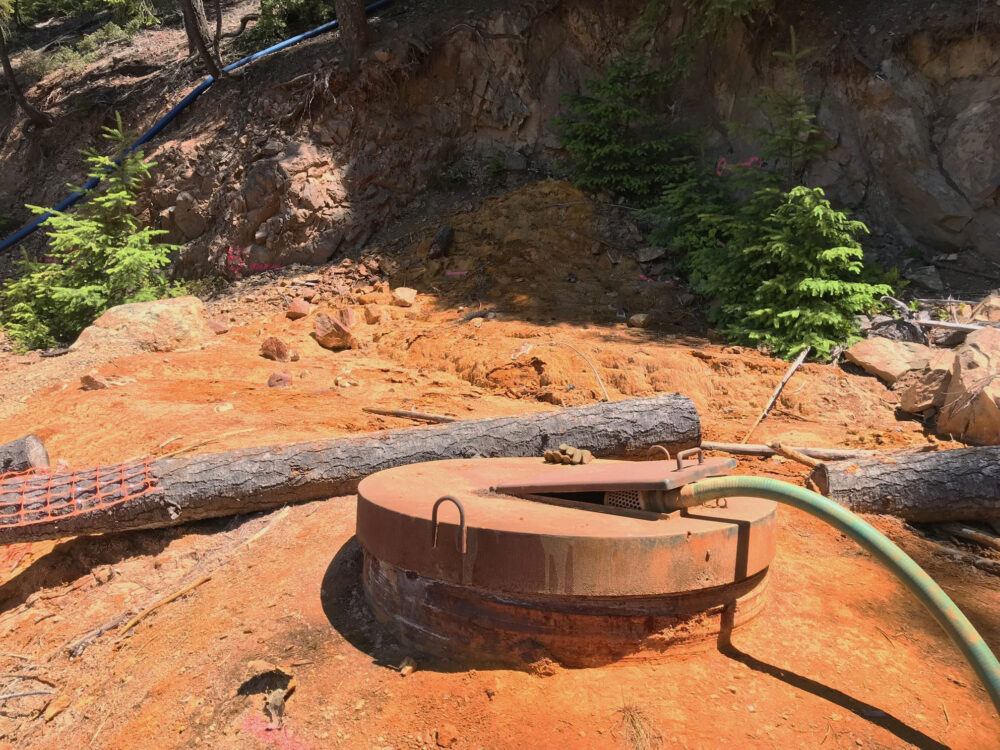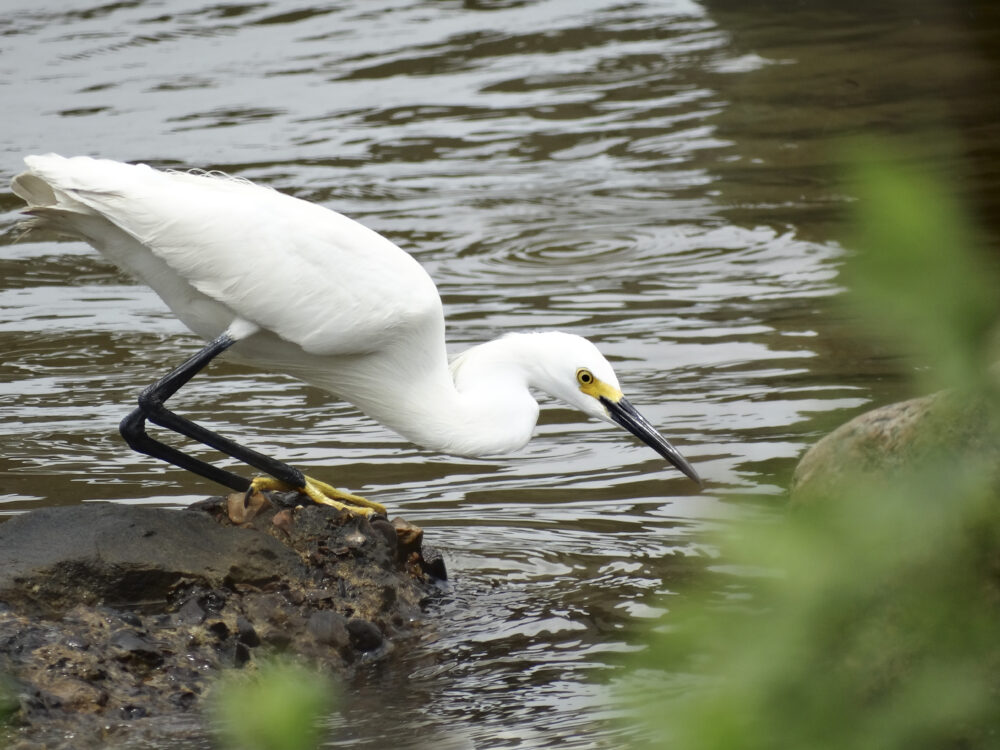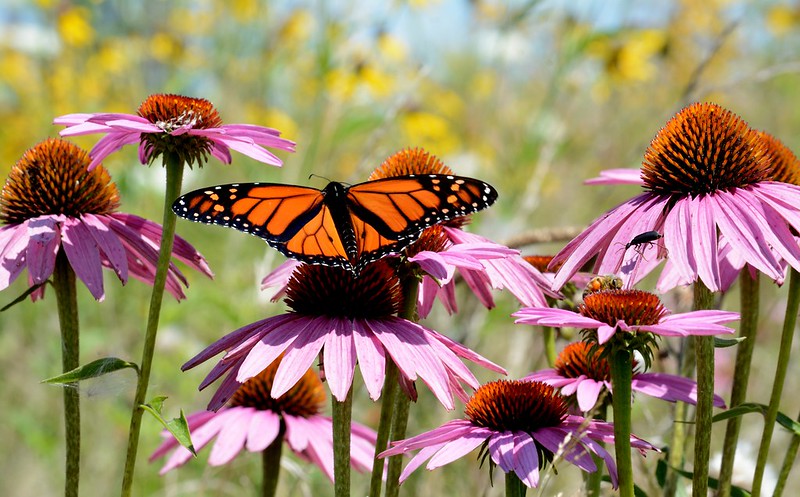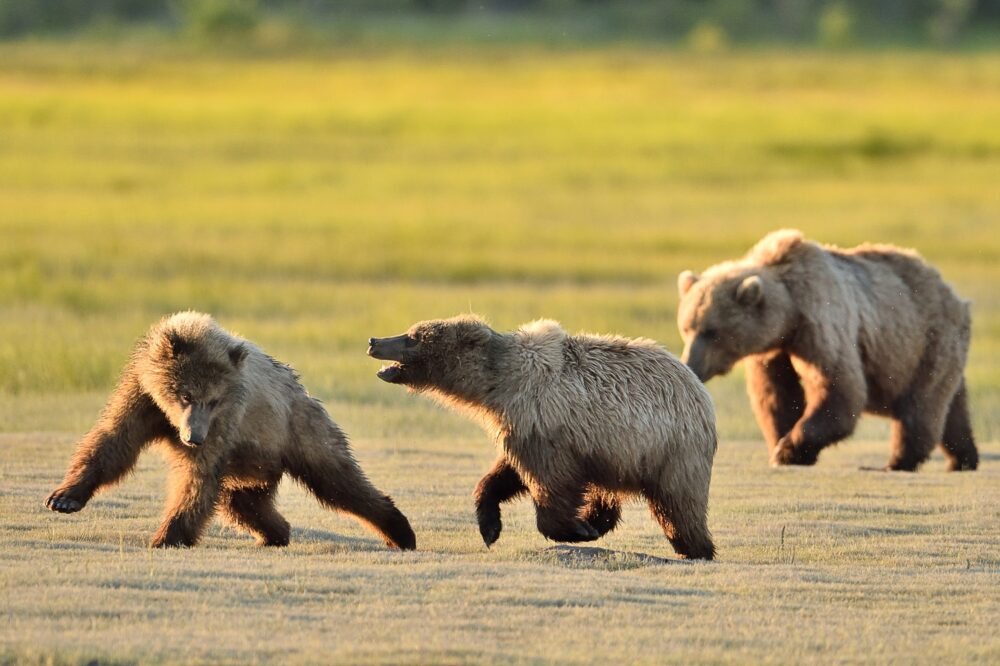We have much more to do and your continued support is needed now more than ever.
Habitats Can Help Reach a Million Pollinator Gardens!
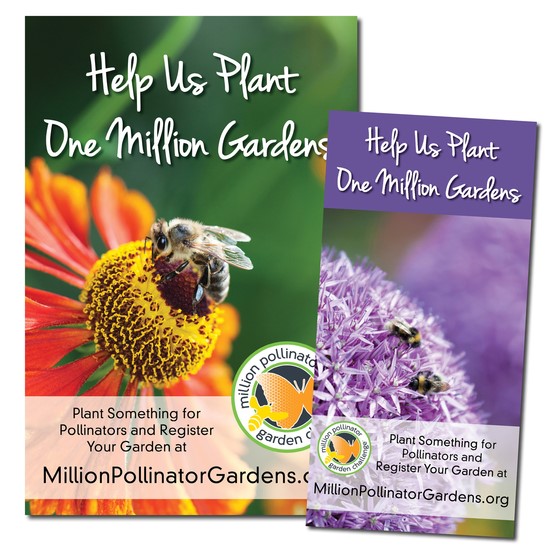
Three years ago the National Pollinator Garden Network put out a call to all Americans to help save declining pollinators and participate in the Million Pollinator Garden Challenge by planting gardens that support bees, butterflies and other pollinating wildlife. The National Wildlife Federation is excited to report that participants in our Garden for Wildlife™ movement have risen to the occasion.
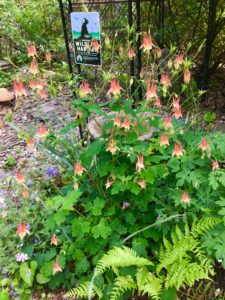 Since the launch of the challenge in 2015, we have contributed over 30,000 new Certified Wildlife Habitat® gardens in residential yards and community spaces, 1,500 Schoolyard Habitats, 40,000 Butterfly Hero gardens, 4,000 acres of pollinator-friendly habitat across approximately 400 Mayor’s Monarch Pledged cities, and engaged new university campus habitats through the Campus Pollinator Pledge.
Since the launch of the challenge in 2015, we have contributed over 30,000 new Certified Wildlife Habitat® gardens in residential yards and community spaces, 1,500 Schoolyard Habitats, 40,000 Butterfly Hero gardens, 4,000 acres of pollinator-friendly habitat across approximately 400 Mayor’s Monarch Pledged cities, and engaged new university campus habitats through the Campus Pollinator Pledge.
All these efforts have contributed to over 700,000 gardens created in the last three years, meeting two-thirds of the Million Pollinator Garden Challenge’s goal of a million pollinator-friendly gardens. Now, with less than a third of the way to go, the National Wildlife Federation, along with its co-founders in the National Pollinator Garden Network, renew the challenge to reach the goal of one million registered gardens.
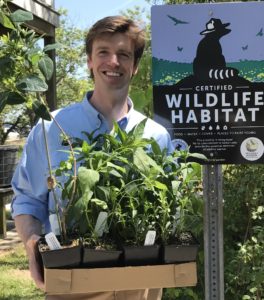
“We encourage every American to join the millions of folks across our nation who are stepping up to help save pollinators. Right now, we’re only 300,000 pollinator gardens away from our million garden goal thanks to the incredible partnership among the National Pollinator Garden Network’s 50 conservation, garden trade, voluntary civic and federal partners,” says Collin O’Mara, President and CEO of the National Wildlife Federation. “This collaboration proves that by working together we can make a huge difference for wildlife in a way none of us could accomplish alone.”
The Importance of Pollinators
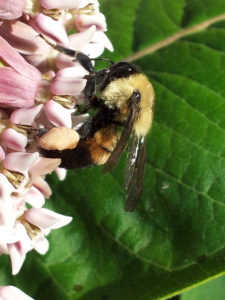
Bees, butterflies, hummingbirds, bats and other animal pollinators fertilize the blossoms of wild plants, allowing them to produce the seeds, berries, nuts and other natural foods that form the foundation of food web upon which all wildlife rely. Bees are critically important for our own food production, pollinating one-third of our crops. Bees “play a critical role in food security,” says Val Dolcini, president of the Pollinator Partnership, another one of the network’s founding organizations. In fact, one out of every three bites we eat is the direct result of a pollinator’s work, contributing $29 billion to America’s food production, according to Cornell University.
But pollinator declines in recent decades have been steep and severe due to habitat loss, parasites, pesticides, and other threats.
Both domesticated honey bees and wild native bees are experiencing dangerous declines as well. The once common rusty-patched bumble bee was recently listed as an endangered species. Monarch populations have plummeted by 90% in the last 20 years.
Get Involved
To help pollinator numbers increase, the National Pollinator Garden Network launched the Million Pollinator Garden Challenge to inspire people and organizations to create more pollinator habitats. The network provides links to the National Wildlife Federation’s Garden for Wildlife resources, such as the Native Plant Finder, along with other partner organizations’ resources to help people spread the word, grow beautiful gardens and drive conservation efforts. “Leaders in the 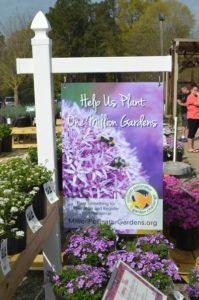 garden trade and horticulture sector have stepped up to meet consumer demand for pollinator-friendly plant material and educate its professionals on sustainable methods that support habitat,” says Craig Regelbrugge, yAmericanHort another co-founding org.
garden trade and horticulture sector have stepped up to meet consumer demand for pollinator-friendly plant material and educate its professionals on sustainable methods that support habitat,” says Craig Regelbrugge, yAmericanHort another co-founding org.
Recent studies have shown that even small gardens can make a difference for pollinators by increasing diversity of bee species across urban and suburban landscapes. By creating, planting and maintaining a habitat garden, and registering it on the Million Pollinator Garden Challenge map (which happens automatically when you certify your garden with the National Wildlife Federation), Americans can contribute to revitalizing the health of bees, butterflies, birds, bats and other pollinators across the U.S. Anyone can plant for pollinators and join this effort to reach one million.
Some Americans, like 10-year-old Kedar Narayan of Lower Nazareth Township, PA, are taking the challenge quite seriously, and have gone to great lengths to protect pollinators and inspire an entire generation of conservationist
Spread the Word on Social
The 700,000 gardens currently registered under the Million Pollinator Garden Challenge show a pollinator movement is underway. There are many great pollinator gardens out there that simply need to be registered, and many empty plots of land awaiting planting. The National Wildlife Federation and the National Pollinator Garden Network calls on the community of concerned Americans to do their part and create healthy, lasting habitat for pollinators and to spread the word to friends, family and neighbors so we can reach the goal of a million pollinator gardens.
One way to do spread the word is to use the hashtag #beecounted and # PolliNation on social media during National Pollinator Week, June 18-24, 2018.
You can also download the GrowIt! app on your smartphone or tablet, create a profile, and share pictures or create a project that features key photos of your pollinator habitat gardens to inspire others. Be sure to use the hashtags above to help build the community and connect with others.
Special Promotion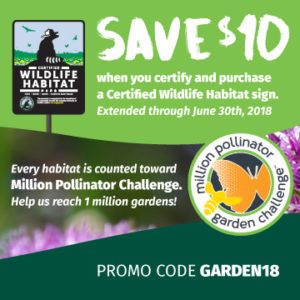
Every habitat of every size counts, from window boxes and garden plots to farm borders, golf courses, school gardens and more.
The National Wildlife Federation is running a special promotion for the month of June 2018 to recognize pollinator gardens as Certified Wildlife Habitats via the Garden for Wildlife program so they count towards the Million Pollinator Garden Challenge.
Go to www.nwf.org/garden to get started.




